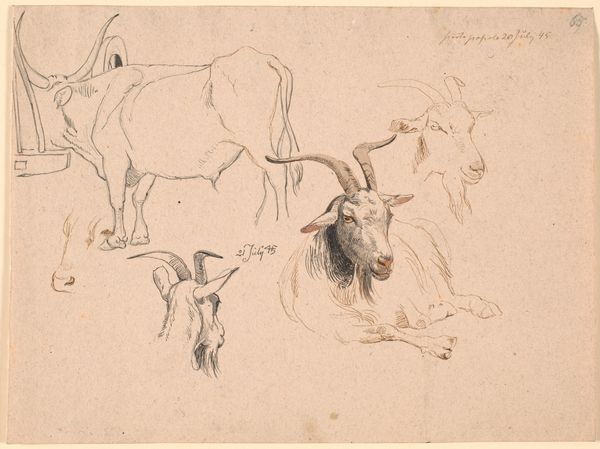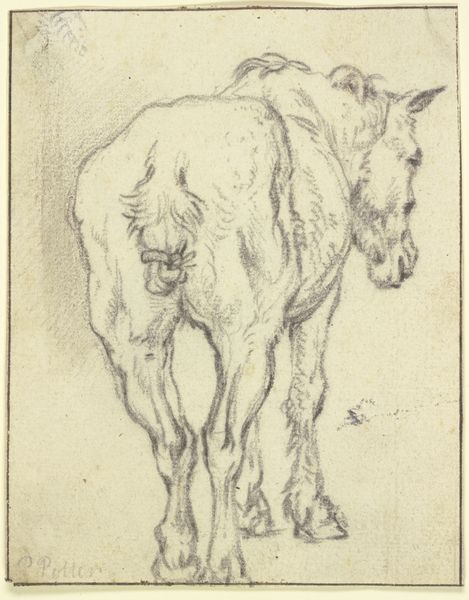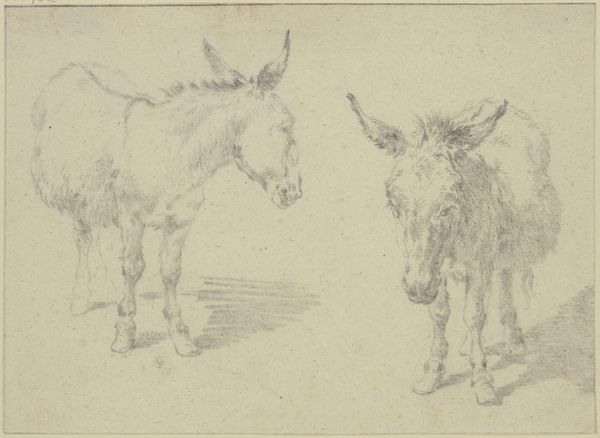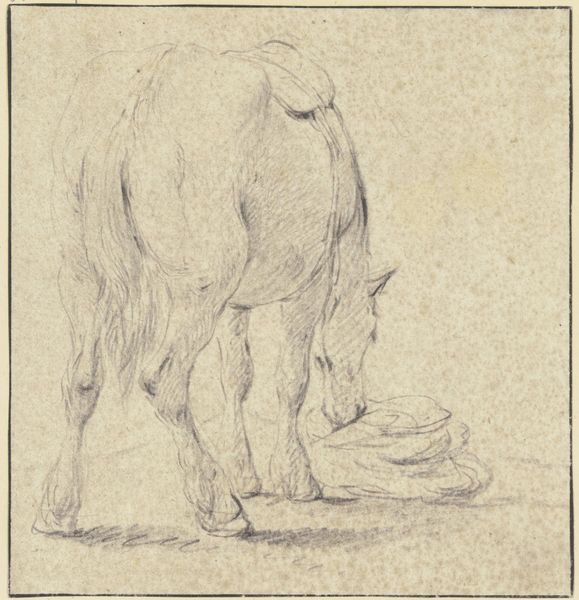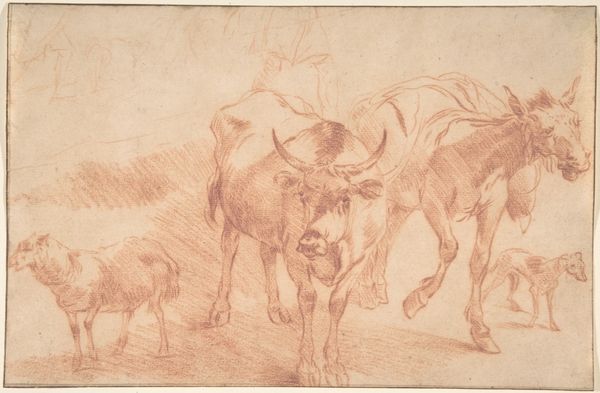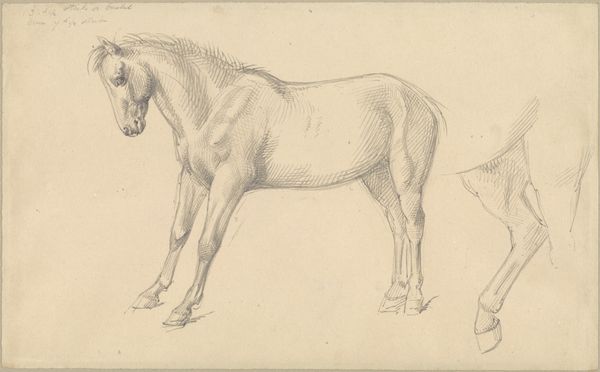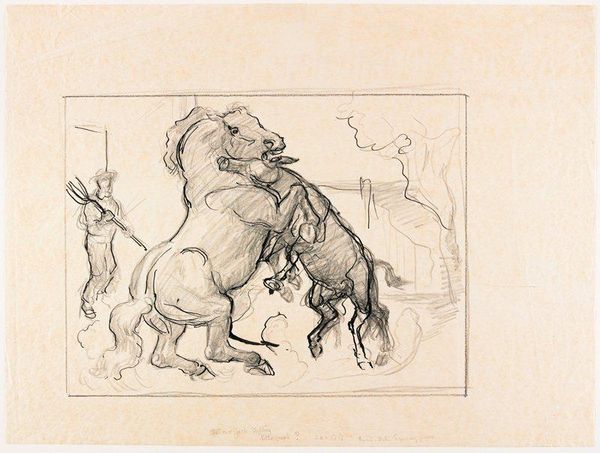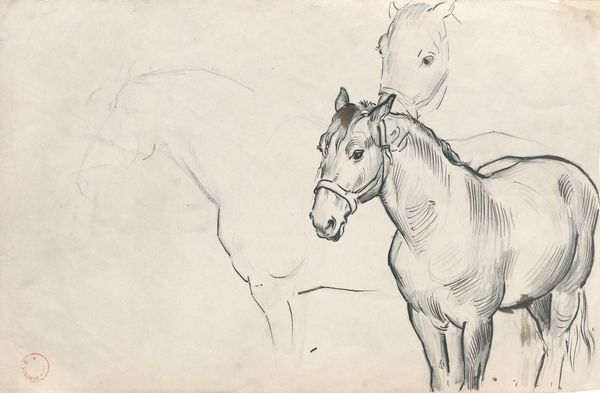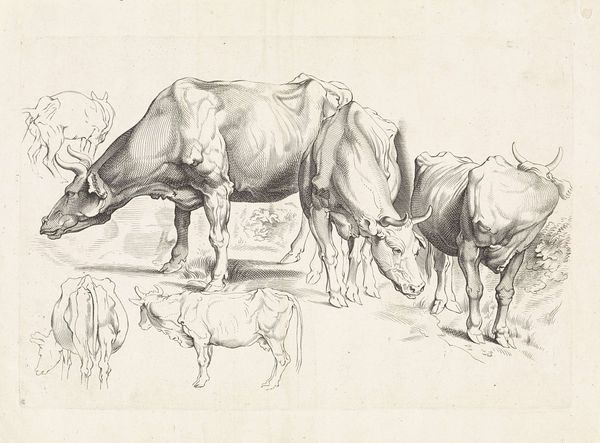
Hoppen og føllet, f.n. hestestudie (ryg og hovede) og øren af et føl 1840
0:00
0:00
drawing
#
drawing
#
animal
#
landscape
#
realism
Dimensions: 141 mm (height) x 150 mm (width) (bladmaal)
Editor: Right, next up we have Johan Thomas Lundbye's "Mare and Foal, formerly Horse Study (Back and Head) and Ear of a Foal," made in 1840. It's a pen drawing. It feels quite intimate, like a private glimpse into the Danish countryside. What catches your eye in this study? Curator: Well, immediately I see a negotiation of power and control reflected in 19th-century Danish society’s evolving relationship with nature. Lundbye, as a product of his time, couldn't help but imbue these animal studies with socio-political undertones. Do you see any suggestions of that in his line work or the animals' postures? Editor: I suppose the careful detail given to the mare's bridle might suggest human control, even within this seemingly natural scene. Is there a relationship between this 'realist' style and Danish nationalism at the time? Curator: Absolutely. Artists like Lundbye sought to define a unique Danish identity through depictions of the local landscape and its inhabitants, both human and animal. Realism became a vehicle for asserting cultural independence. Look at the way he’s framed the animals in what looks like a pastoral, idyllic scene. What purpose does this contrast of freedom and constraint serve? Editor: Perhaps it's showing an ideal—harmony between the domestic and wild aspects of Danish life, but still hinting at how this 'nature' is observed from a cultural framework? It wasn't quite as wild or free as it appeared, and Lundbye had something to do with this. Curator: Precisely. And consider how these images, displayed in institutions like the SMK, played a role in shaping public perception. Museums served as platforms for constructing and reinforcing national narratives. It makes you think about how art contributes to the cultural heritage and the potential subtle intentions it holds. Editor: It is really thought-provoking. Thanks, I see it completely differently now. Curator: Indeed, I also have fresh thoughts after our conversation!
Comments
No comments
Be the first to comment and join the conversation on the ultimate creative platform.
